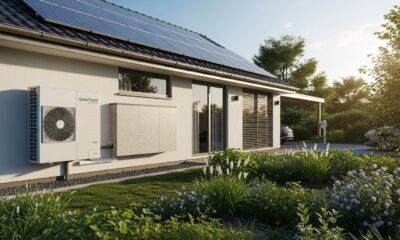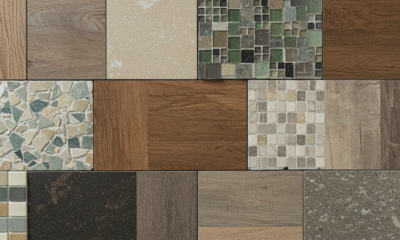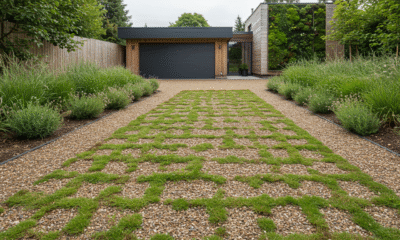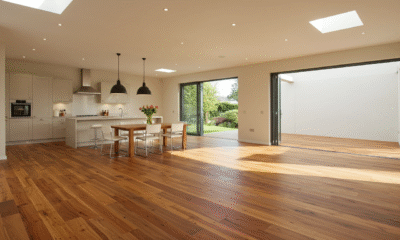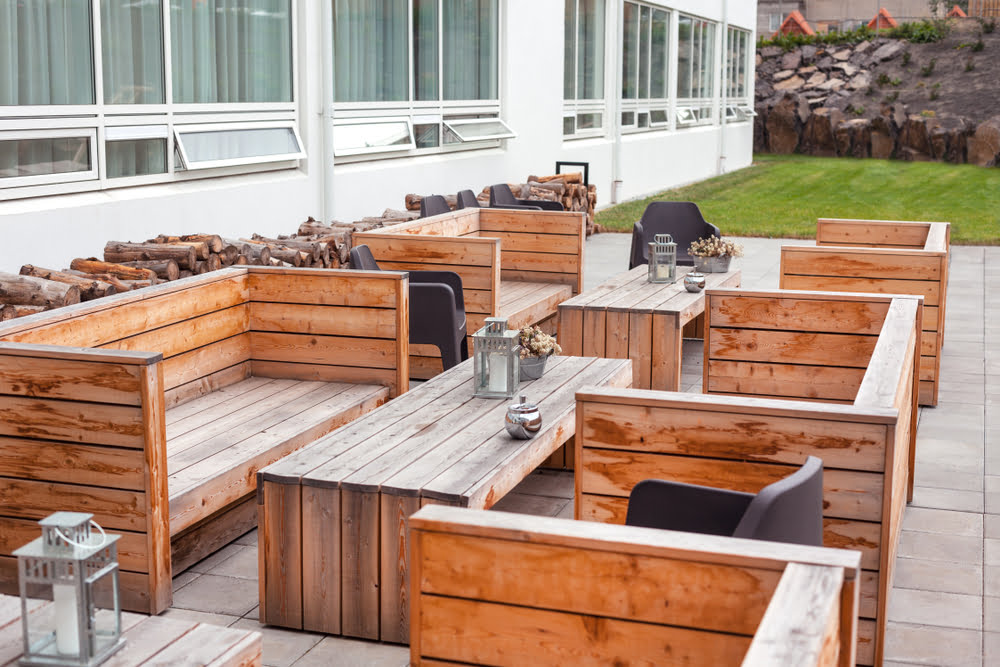

Environment
Is Eco-Friendly Composite Decking Really Good for the Planet?
Are you looking for an eco-friendly decking option? Composite decking is a type of outdoor flooring, made from recycled plastic and reclaimed wood fibers, that is highly durable, long-lasting and water-resistant. Unlike traditional wood decking, composite decking boards do not require staining or painting and can last for up to 25 years with little maintenance.
Choosing composite decking for your outdoor space can has many excellent environmental benefits, such as reducing the rate of deforestation, lowering levels of pollution in the air, and reducing water usage during manufacturing. Composite decking may be more expensive than traditional wood decking. However, since it is environmentally-friendly, durable and requires low-maintenance, it is an attractive option for homeowners looking to invest in a sustainable outdoor space.
The Advantages of Composite Decking
As mentioned, one of the major advantages of composite decking is that it requires less maintenance than traditional wood decking as composite decks don’t need to be stained or painted, which can be a time-consuming process for wooden decks. This means homeowners can enjoy their outdoor living space without being concerned about upkeep and regular repairs. In addition, composite boards are more resistant to wear, staining, fading and other forms of deterioration caused by exposure to sunlight and moisture over time. Another great advantage is that unlike real wood, wood-plastic composite decking boards do not warp or splinter; this makes them ideal for families with young children and everyday use.
Potential Disadvantages of Composite Decking
Despite the many advantages of composite decking, there are some disadvantages that homeowners should be aware of. The most significant downside is the higher upfront cost compared to traditional wood decking. Composite materials tend to be more expensive than their wooden counterparts; however, this can be offset by the long-term savings due to their low maintenance requirements and durability.
Is Composite Decking really an environmentally friendly option?
The use of recycled materials in composite decking in eco-friendly composite products is one of the biggest reasons that it has a positive environmental impact. By using reclaimed wood or plastic from post-consumer waste, manufacturers can reduce their reliance on new resources and lessen the strain that harvesting raw lumber places on forests around the world. Essentially, no trees have to be felled to make composite decking boards and no additional energy is used to process these recycled materials.
One of the most attractive benefits of using composite decking is its longevity compared with traditional wooden alternatives; it typically lasts for up to 25 years with minimal maintenance required over time. This significantly reduces replacement costs associated with other flooring options while also minimizing waste sent into landfills due to discarded panels after just a few years’ worth of wear-and-tear.
The use of staining and sealing products can introduce harmful chemicals into the soil and water. As a low-maintenance option, composite decking doesn’t require staining or sealing like natural wood decking and can be cleaned with soapy water and a brush.
One of the few potential drawbacks of composite decking as an eco-friendly option is that there are limited repurposing possibilities in comparison to timber, cedar or redwood. If your composite decking boards need to be cut before they’re installed, it may lead to extra short lengths of decking that, if not repurposed, may go to waste. However, Ecoscape UK will be the first company in Europe to have an afterlife option as customers can return the boards, and they’ll be reused to create products such as wall partitioning boards, substructure and pallet components.
Alternatives to Composite Decking
Cedar and redwood are two popular alternatives to composite decking. These materials have been used in outdoor construction for centuries, thanks to their natural durability and resistance to rot, insects, and decay. Cedar is also naturally resistant to splitting or cracking which makes it an excellent choice for high-traffic areas such as patios or decks that will see a lot of use over time. Redwood has similar properties but tends to be slightly more expensive than cedar; however, it does offer the added benefit of natural beauty that many homeowners prefer.
Bamboo decking also provides yet another alternative material choice when looking at non-composite options. Bamboo is not only sustainable – since new shoots grow back quickly after harvesting – but highly durable too due its dense fibers which make it less likely to scratch or dent than softer woods like pine or fir often used in traditional decks.. Additionally, bamboo can be treated with preservatives before installation meaning you don’t have to worry about staining your new outdoor living area either!
Conclusion
In conclusion, composite decking is an attractive and eco-friendly option for homeowners looking to invest in a sustainable outdoor space. Composite decking boards require minimal maintenance, do not require staining or painting like real wood, and have a long lifespan. As the decking is made from recycled materials, which reduces the strain on forests while also reducing air pollution levels during production processes, composite decking is considered an eco-friendly decking option in comparison to natural wood decking.


 Environment10 months ago
Environment10 months agoAre Polymer Banknotes: an Eco-Friendly Trend or a Groundswell?

 Environment11 months ago
Environment11 months agoEco-Friendly Home Improvements: Top 7 Upgrades for 2025

 Features9 months ago
Features9 months agoEco-Friendly Cryptocurrencies: Sustainable Investment Choices

 Features10 months ago
Features10 months agoEco-Friendly Crypto Traders Must Find the Right Exchange
